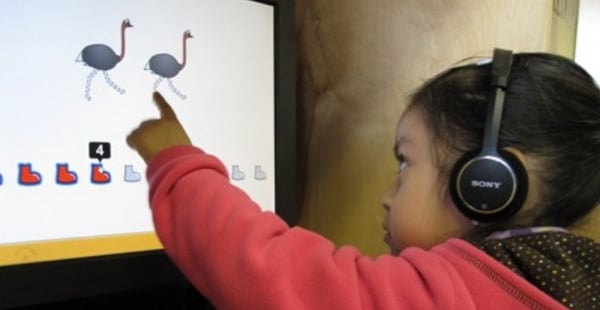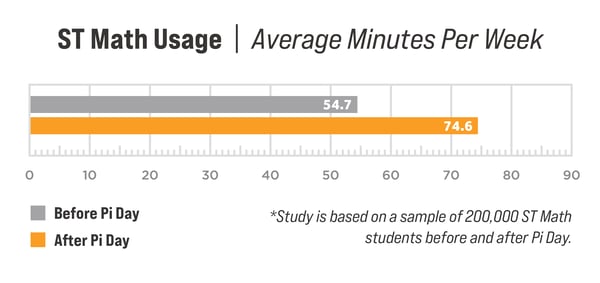
Why is ST Math worth using during this time of remote learning? More generally, what should educators, administrators and families be looking for in any distance learning program or resource?

With districts around the country having closed schools, educators have been dealing with the immediate challenges of salvaging the remainder of this academic year while planning for a dramatically different, unpredictable landscape when students eventually return to classrooms.
In the short term, the shift to a distance instruction model is creating setbacks in student learning, with underserved students disproportionately affected. Looking ahead, more students will be behind overall when they return to schools, and the disparities between students will be greater. More is being asked of parents and caregivers at home, where the demands of remote learning facilitation are often competing with the need to work and ensure the basic needs of families are being met.
Many districts have just gotten remote learning up and running after spending the past several weeks trying to address equity issues as best they can. Yet access to devices and connectivity alone isn’t enough, it’s just the beginning. How the technology is being used, what software tools are provided, and how usable they are in a remote mode are additional challenges that must be navigated.
As mentioned above, for a variety of reasons, the switch to schoolwork at home comes with time constraints. Current recommendations for the amount of time kids should be engaged in education activities per day varies, but some common guidelines are 1-3 hours per day for K-8 (60-90 minutes through grade 2, 120 for grades 3-5, and 180 for grades 6-8). That limited amount of time still needs to be highly productive for learning-per-hour, even in the remote setting.
If elementary schoolers are engaging in just 5-10 hours a week of instructional activities, how can we get the most positive impact per educational week using digital resources? By providing instructional tools that do the following:
ST Math has been proven to positively impact student achievement across all student subgroups and in all types of schools, with all types of teachers, when used for 60 minutes per week in grades K-1, and 90 minutes per week in grades 2-8. That’s an average of 20-30 minutes per day, three times per week. When students solve their way through the puzzle-based games, they self-pace through their grade-level, standards-aligned math content, and master mathematical concepts.
Going back to the question at the top of this blog post, ST Math is worth using because it’s been proven effective, and by design, it’s just as powerful a learning tool outside the classroom as it is inside of it.
Looking at ST Math usage of more than 200,000 students (210,765, to be exact) since the program was made free through June 30th on Pi Day (March 14th), we are seeing that students are still engaging in productive learning at home:

That last number is really exciting because it speaks to student engagement, and is something we’ve seen proven time and again—when students can solve puzzles in ST Math as much as they want, they play more!
ST Math also provides opportunities for parents and caregivers to help foster learning, without requiring mathematical expertise. The game puzzles themselves provide all the math rigor needed, and parents can use skills like encouragement, facilitating questions, and getting their students to explain their thinking. With many parents themselves uncomfortable with math, it’s helpful to have a “low touch” way for students to learn without a heavy lift at home. But for parents who do feel more comfortable, ST Math provides plenty of ways for parents to get involved in facilitation and discussion.
Schools and families that make ST Math a part of their remote learning plan receive support from our amazing Ed Success team, as well as additional MIND resources. They also join a nationwide community of ST Math users who are facing the challenges of this unique time together.
In addition to the live and on-demand webinars running regularly, ST Math offers a powerful library of online training, downloadable resources and tools to extend ST Math activities in a variety of ways.
On Facebook, we have both school and family support groups, where questions, challenges and success stories are shared daily.
Developing Our MathMINDs is a weekly series of conversations and resources about math that is intended to be a journey of growth with families. Each week, MIND's Lead Mathematician and Product Director Brandon Smith and Content Development Manager Nina Wu talk about the adjustments families are making to learning at home, and the opportunities this situation provides for changing our relationship with math.
There is an overwhelming amount of learning resources that are being offered to schools and families at this time. The needs of each student, school and district are different as well. As schools and families make choices about what their students are spending their education time on, it’s important to keep in mind the factors outlined above.
ST Math can make a positive impact for students as we try to mitigate the loss of learning for this year, and regain ground in the new school year.

Andrew R. Coulson, Chief Data Science Officer at MIND Research Institute, chairs MIND Education's Science Research Advisory Board and drives and manages all research at MIND enterprises. This includes all student outcomes evaluations, usage evaluations, research datasets, and research partnering with grants-makers, NGOs, and universities. With a background in high-tech manufacturing engineering, he brings expertise in process engineering, product reliability, quality assurance, and technology transfer to edtech. Coulson holds a bachelor's and master's degree in physics from UCLA.
Comment